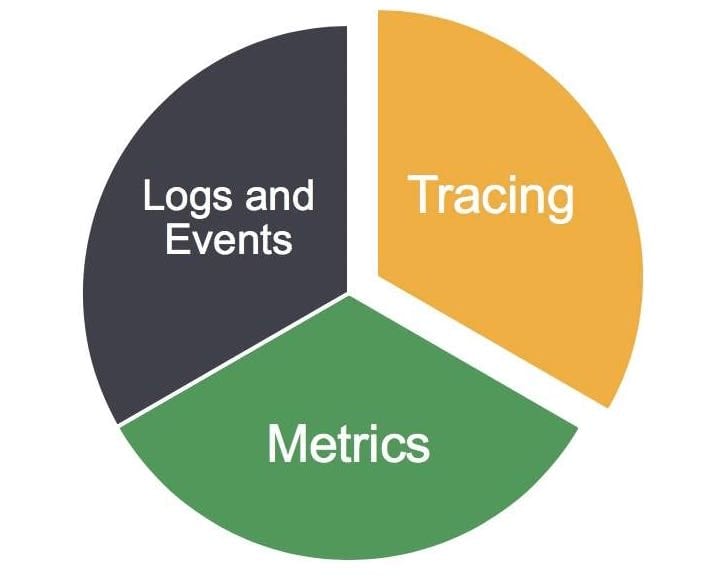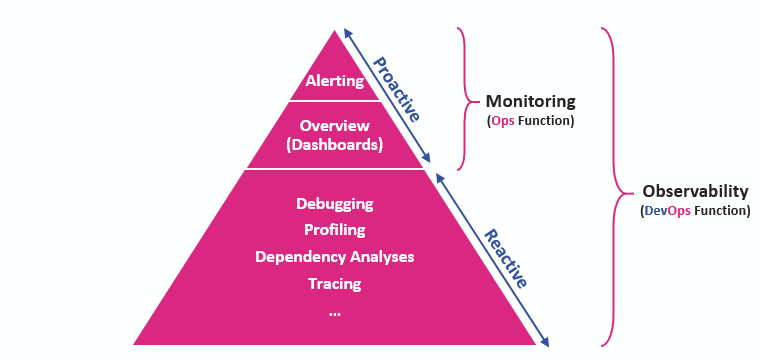What is Observability?
For any company, it’s essential to utilize the most profitable and reliable services for performing different tasks and growing your business. By consuming these software products and services, they receive the latest updates and improvements through new releases via the Internet.
That is why IT service providers try to improve the stability and predictability of the complex operations of software. For this purpose, they have to observe, monitor, and analyze the software performance for optimizing the system dependability.
This article will look at the detailed definition of observability, its benefits, and the primary purposes of its implementation. Let’s get started!
What is Observability?
The term observability originally comes from control engineering. In software, we define observability as understanding and explaining any state a system can get into without deploying new code.
In other words, observability helps you answer questions regarding the software products or services functioning without using additional code lines or other metrics. This will significantly help to utilize the system tools correctly and simplify predicting what will happen next.
What is the Purpose of Observability?
Software becomes more complex over time to ensure it is stable and predictable and can successfully handle a massive amount of data.
By detecting new issues that arise during software utilization, it becomes easier for team members to understand what’s happening and resolve issues. As a result, you gain the ability to predict potential problems and prevent them.
Software observability will allow you to:
- Detect issues and prevent them from reaching customers.
- Enhance system safety and optimization features.
- Expand software performance company-wide.
- Train your company’s team to understand and deal with potential issues
- Estimate the primary business risks and successfully manage the software utilization process.
- Provide a positive experience to stakeholders and establish both reliable and profitable cooperation.
Observability allows performing all the important actions mentioned above without using a single line of code, which significantly simplifies detecting, fixing, and preventing potential problems in the system.
Observability Tools
These three categories of telemetry data are critical for successful software observability:
- Metrics
- Events and Logs
- Traces
By analyzing all the data received, you can get a complete view of your system performance, allowing you to understand how to improve it and prevent potential failures.
Metrics
Metrics measure data over a set period, like queue depth, memory usage, the number of requests per second handled, etc. They are critical for getting the real state of affairs via reports to detect triggering alerts, figure out any changes that occurred, and visualize data for analysis.
Events and Logs
Events are immutable, time-stamped records of tasks completed over some time. Usually, they define the result of action as a code response.
Logs are the lines of text that the system shows when certain code lines are being processed. They can be presented as plain text, structured, or binary. Logs become valuable when trying to verify and analyze processed code and are primarily used to detect an issue in a database, cache, load balance, etc. Unlike the events category, logs can present a more detailed analysis of a problem.
Traces
Traces present the activity of a single transaction or request through the system. They register a transaction’s path, each component’s latency, and show the exact component that caused a choke point or failure.
What is the Difference Between Observability and Monitoring?
According to Medium, observability is high-level monitoring that provides specific insights, benefits, and solutions. For example, if you could not utilize KODI, general monitoring would only find the system’s weak points. Observability would provide you with a list of options to resolve the issue, like choosing the best VPN for KODI that helps you comfortably use the platform.
A system’s monitoring tools usually addresses two questions:
- What is broken?
- Why is it broken?
According to Google's SRE (Site Reliability Engineering) book, the first question indicates the symptom. The second question indicates what caused the issue. Addressing these critical questions generates maximum benefit and minimum noise. Monitoring is mainly used when creating reports about the current state of a system, checking what has changed and why.
Observability combines monitoring with other, more complex distributed systems to inspect an issue and provides advanced analysis and richer context of a system’s behavior. It is mainly used for system profiling, single-process debugging, tracking details about exceptions or crashes, load testing, log collection and analysis, or traffic inspection.
Why Should You Consider Observability?
Incorporating software observability can benefit different groups of users in various ways.
Developers
If you’re a developer, observability can optimize the process of code deployment or system changing, decreasing stress while resolving issues.
You will be able to make decisions regarding an issue because you won’t have to wait for someone else to explain what is going on; you’ll already know. Knowing the system makes navigating more manageable and helps implement system changes faster, which will create a better overall workflow.
Teams
Having a shared view of the system helps other teams understand the problems that occur. It will enhance communication between departments because everyone will have the necessary knowledge, improving the overall process.
Business Owners
If you’re a business owner, observability helps the IT team release quicker and safer code more frequently and with confidence. Your company already has the business intelligence to help you figure out what goes wrong, so let observability help detect the issues and apply the improvements.
Conclusion
Now you know what exactly software observability is, what it consists of, and the advantages of its implementation. Software developers, cross-functional teams, and business owners are all the parties whose work can be simplified by this concept. Utilize the power of observability now and reap the benefits tomorrow.
To learn more about Liquid Webs solutions, including our best-in-class dedicated server hosting, visit our product page to see which solution is a perfect start for your project.
Related Articles:

About the Author: Jerry Vasquez
A self-professed pirate captain with two decades of leadership experience, Jerry has led teams from 60+ cooks and chefs to 16 networking engineers. He brings those years of experience to his current role as Product Manager at Liquid Web, focusing on networking and security products. When not working or sleeping, Jerry can usually be found eating and having a good conversation with good people.
Our Sales and Support teams are available 24 hours by phone or e-mail to assist.
Latest Articles
How to use kill commands in Linux
Read ArticleChange cPanel password from WebHost Manager (WHM)
Read ArticleChange cPanel password from WebHost Manager (WHM)
Read ArticleChange cPanel password from WebHost Manager (WHM)
Read ArticleChange the root password in WebHost Manager (WHM)
Read Article




